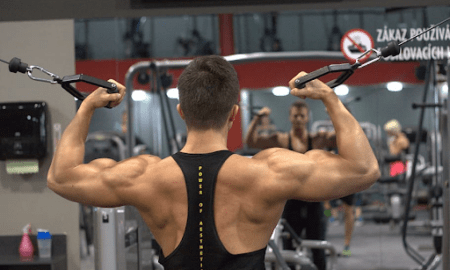Q: Help! I can’t feel my back while training it, and it never gets sore. All of my other bodyparts get sore when I work out, and I can feel them pump and burn while I train them. What am I doing wrong?
A: Do not fret, my friend, because you are not alone. It’s a very common complaint and is certainly why truly great back development is so rare. Plus, serious back training can be brutal!
Back training is truly an art, and although eight-time Mr. Olympia Ronnie Coleman built the biggest back of all time simply by pounding away with very heavy weights, for most of us—you know, humans—a little more “finesse” is involved.
The following are the three main reasons people have trouble getting in touch with their back muscles while training:
1) Too much weight. The reason I listed this first is that it’s definitely the most common problem related to back training. While progressive overload is a necessary facet of successful bodybuilding, the concept is entirely useless if cheating a weight from point A to point B is your norm. Jerking, swinging and overuse of momentum will only lead to stimulation of the biceps and brachialis while leaving the back almost untouched.
2) Incorrect body positioning. Often this point goes hand in hand with the first, as using too much weight forces the body out of the optimal position for recruitment of the back muscles. You must make sure to keep your chest out, shoulders back and a slight arch in your lower back during all pullup, pulldown and rowing movements. Begin every repetition with a full stretch, and when you reach the point of contraction, make sure to squeeze your shoulder blades together forcefully.
3) Not using a thumbless grip. If you find that your biceps and forearms are getting most of the pump during back workouts, it’s possible you’re not using a thumbless grip. By positioning your thumb on the same side of the bar as your other fingers, you’ll will effectively eliminate a lot of biceps and forearm flexor activation and make your back muscles do more of the work.
Two other tips. First, focus as much mental energy as possible on thinking about your back muscles stretching and pulling during every rep—even more than you do on other bodyparts. Second, try to imagine your hands and forearms as extensions of the bar, and initiate each movement by tensing your lats and pulling back at your elbows rather than your hands.
Now, get back in the gym and get back at it.
Editor’s note: Eric Broser’s new DVD, “Power/Rep Range/Shock Max-Mass Training System” is available at Home-Gym.com. His e-book, Power/Rep Range/Shock Workout, which includes complete printable workout templates and a big Q&A section, is available at X-Workouts
.com.




















You must be logged in to post a comment Login